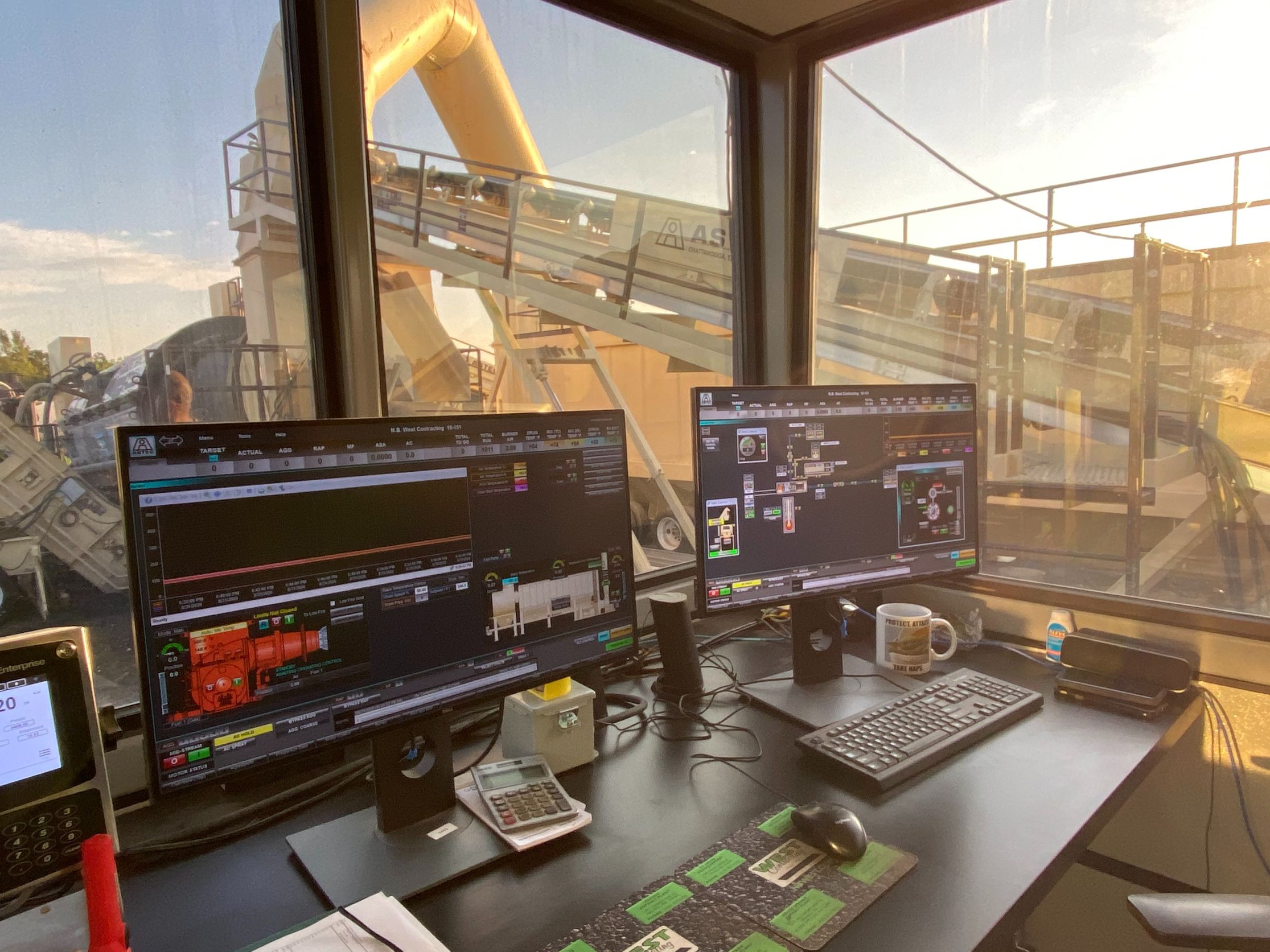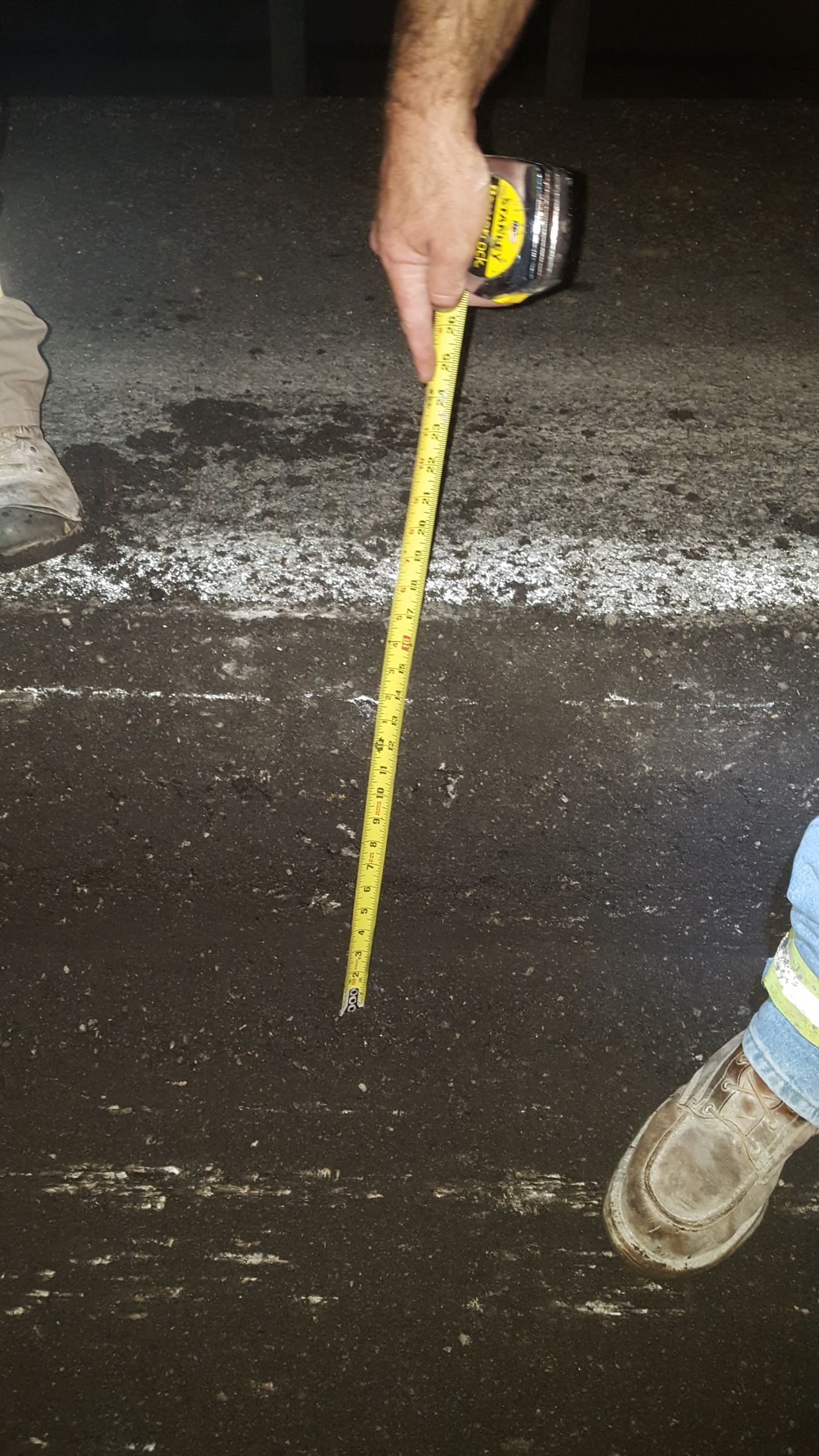Strategic Purchase Wins the Bids for N.B. West
BY Sandy Lender

When N.B. West Contracting Co., Sullivan, Missouri, won contract 180518-F02 for Interstate 44 May 2018, top management gathered for some strategic planning. They knew additional, large contracts were coming up along the I-44 corridor from the Missouri Department of Transportation (MoDOT), and they knew their teams could take on those projects with the right mix production capacity.
“This was the largest asphalt paving contract that our company had ever received with approximately 140,000 tons,” Steve Jackson, general manager for N.B. West, said. Readers can check out the success of that first I-44 job, with its use of intelligent compaction/infrared (IC/IR) in the June 2020 issue of AsphaltPro.

The portable plant includes a Whisperjet 100 MBTU liquid propane burner with heavy oil package. “We have the ability to use liquid propane and with some modification, we can run #2 or #4 fuel,” Steve Jackson said.
“We knew that we would have to let Keith Denney of our concrete division complete the pavement repairs, shaping slopes and rock base on the off ramps, before we could start the asphalt paving in the spring of 2019. Larry West, our owner and CEO; Jim Fitzgerald, president; Greg Eilerman, CFO; Chris West, business development manager; and I sat down and discussed the opportunity of purchasing a new plant to complete the I-44 project.
“We also looked at the upcoming letting schedule that MoDOT had published and realized that there were other large projects scheduled to be let along the I-44 corridor,” Jackson continued. “By having a portable plant, we might be able to capture some of those jobs as well. We decided to look at purchasing a portable plant at that time. We were able to capture a 60,000-ton SMA project that connects to our 2019 I-44 paving project.”

Operator Damon Feldmann, Steve Jackson, and Joe Schroer took a moment once the plant was assembled and ready for business at the St. Clair location in 2020.
Jackson shared that he, Jay Hanes and Clay Pitts of N.B. West attended Astec’s Customer School in 2011. “We were impressed by their training and production facility. Astec also gave us a promise to deliver by mid-December 2018. They delivered on the promise. We were able to get the plant set up in time to start production in Spring 2019.”
They took delivery of the new plant January 2019 and were making mix at the Bourbon, Missouri, site of their stationary Stansteel plant by May 2019. Since then, they’ve relocated the plant to Cadet and St. Clair, Missouri, in 2020.
“We were awarded the next stretch of I-44 that meets up with the eastern end of our 2019 I-44 project,” Jackson explained.
Pitts, who has been in the asphalt industry for 18 years, is the plant operator and said it provides less clean-up and start-up waste, great controls, high production and is “easy to run once you get used to it.”

Loader Operator Dave Mabe had a new Komatsu 500 loader to feed the plant starting in 2019.
Pitts gave credit to their loader operator for helping to keep the I-44 project on track. “It takes a great loader man to keep a plant running at 350 TPH and high RAP and keep the temperature constant. Dave Mabe did a great job feeding the plant to keep our mix consistent.”
Mabe also had a new Komatsu 500 loader to feed the plant, which N.B. West purchased in 2019.
Recycle Capacity
The plant is a portable Double Barrel™ with V-pack™, rated at 400 tons per hour with up to 50 percent recycled asphalt pavement (RAP). Getting more RAP into mixes is a priority for N.B. West due to their commitment to environmental sustainability, but they are limited by material availability. Jackson explained:
“This plant is designed to run 400 TPH at up to 50 percent RAP. We have achieved close to this with some of our mixes; however, we do not have the stockpiles of RAP to push higher percentages. Missouri hasn’t had a fuel tax increase since 1993 so the leadership at MoDOT has to operate in a mode of preserving the existing system instead of expanding the system to which they have partnered with contractors to find innovative solutions to stretch the taxpayers’ dollars. Many jobs over the last 10 to 12 years have been thin lift overlays or single lift mill-and-fill projects. MoDOT specifications allow for very high RAP utilization but Missouri does not have a surplus of millings that can be used to push the RAP contents beyond 50 percent in most cases. We are typically returning our millings back into the mixes on the same project within a few days.”

In anticipation of higher RAP percentages and the potential for temperature fluctuations that come with that production, N.B. West planned ahead.
“We purchased the plant with Astec’s V-Pack Stack Temperature Control System. This system uses their v-flights and a variable frequency drive on the drum so that you can adjust the speed of the drum relative to the set stack inlet temperature and production rate to maintain your baghouse and mix temperatures through a large range of recycled materials and moisture conditions.”

The portable plant includes a Whisperjet 100 MBTU liquid propane burner with heavy oil package. “We have the ability to use liquid propane and with some modification, we can run #2 or #4 fuel,” Steve Jackson said.
They include additives from Ingevity, North Charleston, South Carolina, to assist with mixing temperature control and other properties.
“With the new plant, we utilized Evoflex to achieve higher RAP utilization, and we also used Evotherm to be able to lower our mixing temperatures while still getting compaction on the roadway,” Jackson said. “Vicki Woods at Ingevity has been amazing to work with to come up with new ideas to maximize our plant production with high RAP. I am convinced that running your mixing temperatures lower saves a tremendous amount of wear and tear on your plant. I think that utilizing Evotherm to reduce our plant temperatures will pay off immediately in compaction bonus and TSR bonus, and long term in plant maintenance savings.”

Plant Operator Clay Pitts and Loader Operator Dave Mabe for the new, portable Astec plant
Incorporating RAP means designing more mixes, but that’s not a problem for the team.
“We are fortunate that MoDOT mixes may be used for three years once they are approved. This helps to minimize the number of mixes that we design each year. With the increased RAP utilization with the new plant, we redesigned some of our old mixes with 10 to 20 percent more RAP than our old plant. To date I believe that we have 12 mixes designed for this plant. For 2020 we are using Balanced Mix Design principles for at least one project.”
This contributes to streamlined and consistent quality control, such as that they experienced on the 2019 I-44 project.

“During the fall of 2018, our concrete division started doing the pavement repairs,” Jackson explained. “There were a few long areas. We decided to mill the asphalt down to the concrete. This allowed us to process the millings using the actual crusher for producing the RAP. We then took the processed RAP to do our mix designs for the next year. This allowed us to test our additives with the RAP and binder we are actually going to use on the project. Our quality control department led by Joe Schroer did an amazing job testing and verifying our mixes would perform in the field.”

In 2018, the N.B. West crew milled the top 4 inches of asphalt on its I-44 project to obtain millings for mix designs. They stockpiled them for mixes; the rest of the millings they took to the normal stockpile. This allowed the team to process the millings using the actual crusher for producing the RAP. “We then took the processed RAP to do our mix designs for the next year,” Steve Jackson explained. “This allowed us to test our additives with the RAP and binder we are actually going to use on the project.” As you can see this small length of the interstate had 19 inches of asphalt over concrete, which Jackson said is not typical in Missouri.
Pitts discussed how he could further verify results, in real time, from the control house. “Steve brought in another plant operator and took me out to the road so that I could see the lay down process. He showed me the rollers using intelligent compaction and the infrared scanner bar on the paver. I got a better understanding of how changes in the plant lead to changes in the road,” Pitts said. “The Astec plant controls have a display of the mix temperature, aggregate temperature and drum shell temperature. As long as I see that the lines on the display are straight, I know that they shouldn’t be having problems out on the road.”
Jackson offered some best practices for high RAP production.

“It all goes back to the simple principles of keeping your RAP dry, have multiple RAP bins, and fractionate your RAP to match your needs for your mix designs and lift thicknesses. 2019 was very wet in the Midwest with Missouri suffering sustained flooding throughout the summer. We were storing RAP under shelters so that we could continue to pave even in wet conditions. Using a surfactant-based warm mix additive gave us extra security against residual moisture in our mix.
“With high RAP mixes it is critical that you make sure that you have compatibility between your RAP binder, your virgin binder and your additives,” he continued. “Many of the mixes that we are milling today for our RAP were produced using Venezuelan crude. The virgin binders that we are getting in our market are from Canadian shale oil fields. You also need to be aware if your virgin binder is being acid-modified as this can nullify your amine-based additives. Batching your mixes in the lab with the actual material that you will use in the field and performing TSR or Hamburg testing is critical for making sure your components are compatible.”
Safety Talks

Loader Operator Dave Mabe had a new Komatsu 500 loader to feed the plant starting in 2019.
Safety for personnel is also a priority for N.B. West, and they saw a unique feature in the RAP system. Jackson explained:
“There are safety cables along the RAP conveyor belt. If RAP clumps fall off of the screen deck or conveyor belt and trip the safety cable, or if an employee falls into the cable, the belt shuts off. Astec has a great mid-stream system that allows you to stop production and resume without a loss in quality.
“If the RAP weigh belt stops or the safety cable is tripped, it can become very dangerous with high RAP mixes,” Jackson continued. “The high temperatures that it requires to dry the RAP in a high RAP mix can catch the plant on fire very quickly when the RAP belt shuts off. The combination of the safety cables and the mid-stream control is a great combination for safety.”
With safety, increased RAP percentages, temperature control and increased bidding power under their belts, the N.B. West team is positioned to expand its paving area.
